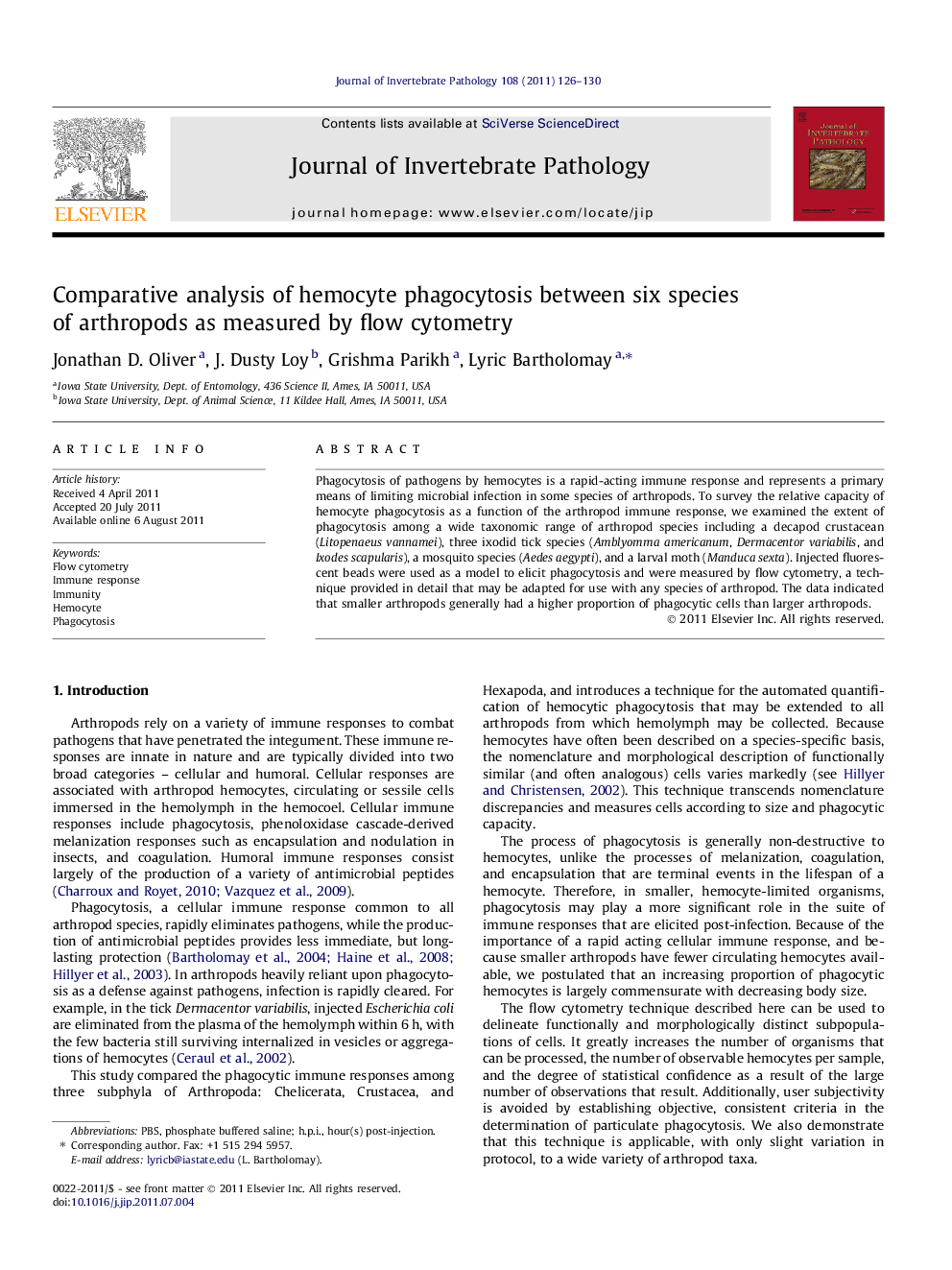| Article ID | Journal | Published Year | Pages | File Type |
|---|---|---|---|---|
| 4557963 | Journal of Invertebrate Pathology | 2011 | 5 Pages |
Phagocytosis of pathogens by hemocytes is a rapid-acting immune response and represents a primary means of limiting microbial infection in some species of arthropods. To survey the relative capacity of hemocyte phagocytosis as a function of the arthropod immune response, we examined the extent of phagocytosis among a wide taxonomic range of arthropod species including a decapod crustacean (Litopenaeus vannamei), three ixodid tick species (Amblyomma americanum, Dermacentor variabilis, and Ixodes scapularis), a mosquito species (Aedes aegypti), and a larval moth (Manduca sexta). Injected fluorescent beads were used as a model to elicit phagocytosis and were measured by flow cytometry, a technique provided in detail that may be adapted for use with any species of arthropod. The data indicated that smaller arthropods generally had a higher proportion of phagocytic cells than larger arthropods.
Graphical abstractMean phagocytic indices of hemocytes to red-fluorescent beads in six arthropod species. Species are represented in order of increasing weight, demonstrating a trend of decreasing proportion of phagocytic cells in larger arthropods.Figure optionsDownload full-size imageDownload as PowerPoint slideHighlights► Comparative examination of hemocyte phagocytosis in six species of arthropods. ► Smaller arthropods with fewer hemocytes generally have a higher proportion of phagocytic cells. ► Morphologically-defined subpopulations of cells identifiable by flow cytometry. ► Broadly applicable technique for measuring phagocytosis in arthropods.
